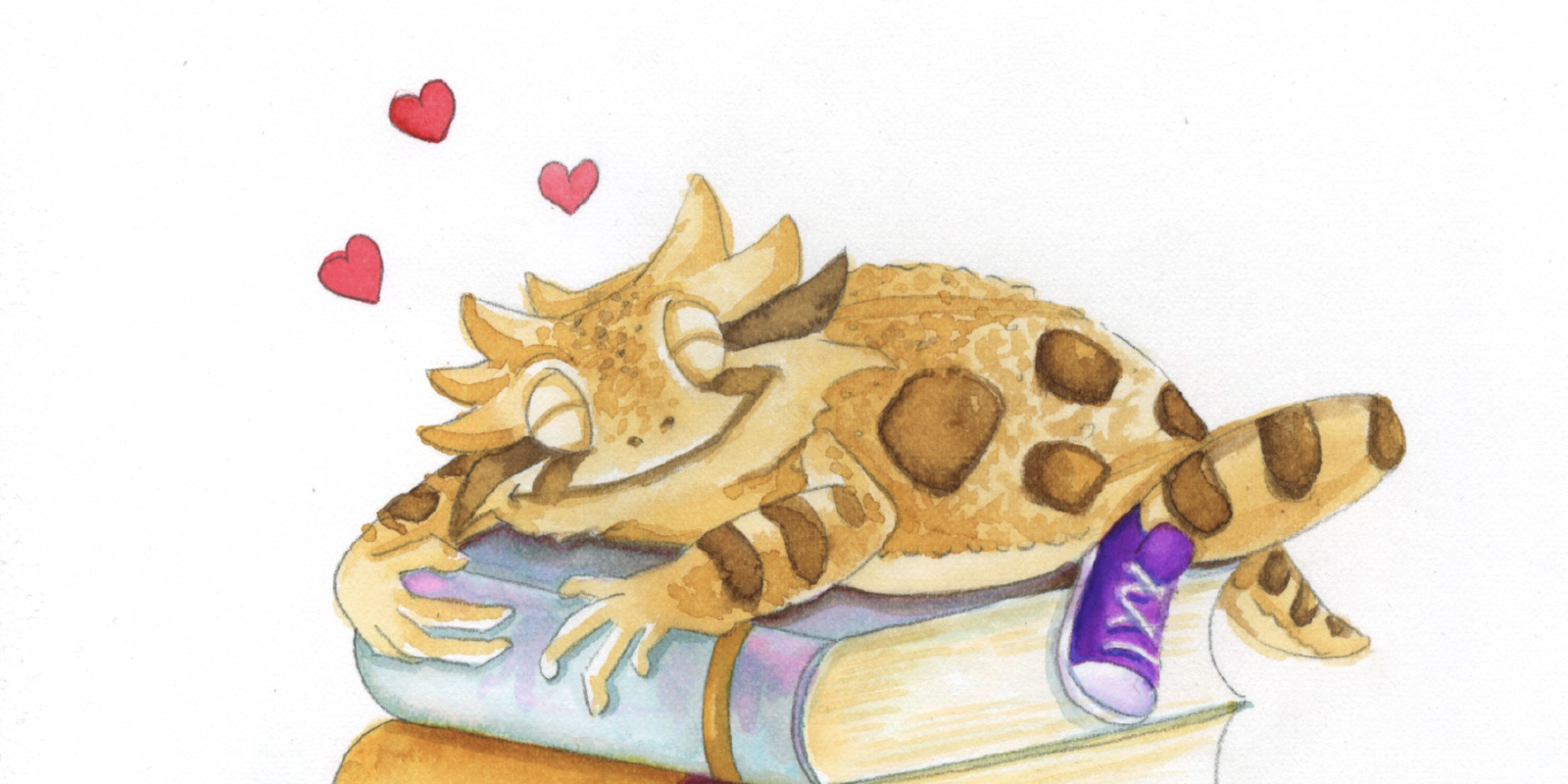
Illustration by Holly Weinstein
Alumni Publish Books for Children
Whether through traditional publishing, crowdfunding or an independent local company, these writers followed their creativity to success.
Every book has an origin story, a spark of inspiration that unleashes a flow of hundreds, thousands of words that can fluctuate from a trickle to a torrent during the writing process. While they share the same launching pad — TCU — these three children’s authors followed distinctly different paths toward publication and in creating characters whose literary journeys lead readers to Texas, the White House and even outer space.
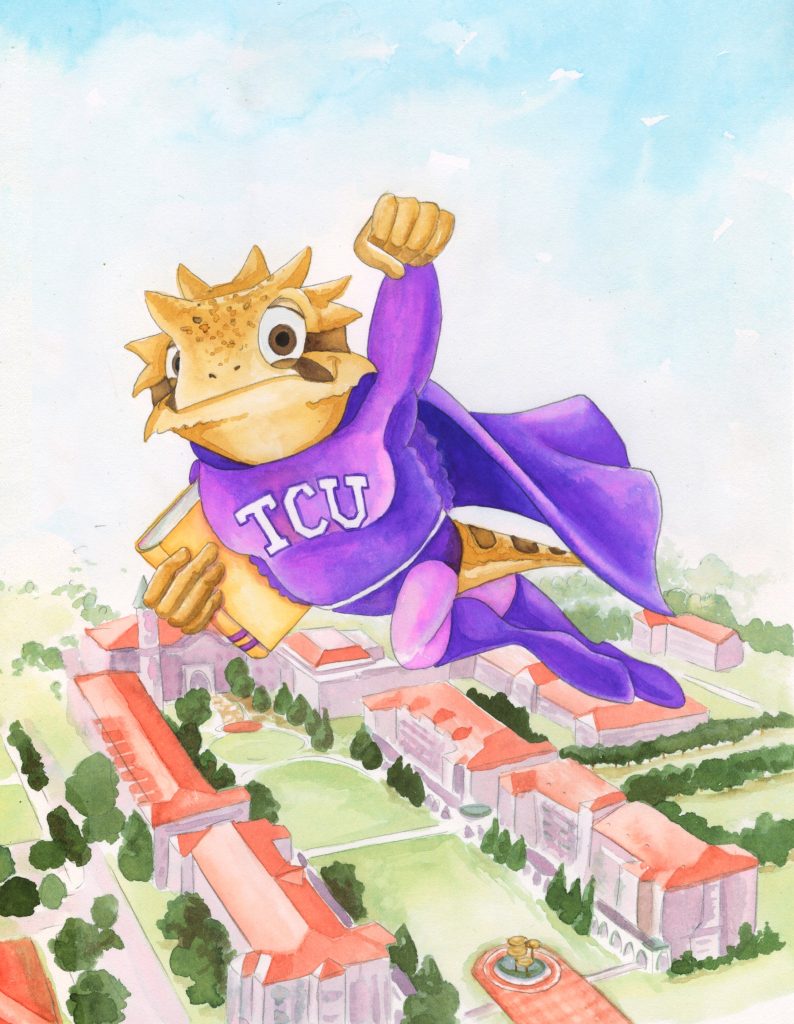
Illustration by Holly Weinstein
Jeramey Kraatz ’08
TCU Majors: English; Advertising and Public Relations
Books (all with HarperCollins): The Cloak Society (2012); The Cloak Society: Villains Rising (2013); The Cloak Society: Fall of Heroes (2014); Space Runners: The Moon Platoon (2017); Space Runners: Dark Side of the Moon (2018); Space Runners: The Cosmic Alliance (2018); Space Runners: The Fate of Earth (2019)
What do you get when you combine The Avengers with Romeo and Juliet? A coming-of-age thriller for middle schoolers titled The Cloak Society — and the launch of a career as a children’s author.
Since The Cloak Society debuted to glowing reviews in 2012, Jeramey Kraatz has channeled his lifelong passion for comic books and superheroes into two popular series and six additional titles, the latest of which, Space Runners: The Fate of Earth, published in July 2019.

Jeramey Kraatz authored The Cloak Society and Space Runners series for adolescents. Courtesy of Jeramey Kraatz
As a kid in Odessa, Texas, Kraatz wrote fan fiction, dreaming up alternative plots for the X-Men and other favorite comics. At TCU he studied advertising, which felt like a more concrete career than writing, but he wasn’t fulfilled by his classes. As a junior, he signed up for a class called The Essay taught by Charlotte Hogg, professor of English. There he found his creative home.
“I knew whatever I did with my life, I wanted it to involve telling stories,” he said. He added English as a double major and applied to Master of Fine Arts programs, earning admission into the nonfiction program at Columbia University in New York.
In the Big Apple, he interned in the editorial department at Marvel Comics. “It was a totally geeky dream come true,” he said. “I was surrounded by superheroes and superpowers.”
Inspired by his surroundings, he conceived The Cloak Society.
The book follows 12-year-old Alex Knight, who is training to follow in his parents’ footsteps in an elite organization — the Cloak Society — of supervillains with extraordinary powers. In his debut mission, Alex saves the life of a young Ranger of Justice, the heroes of the city and sworn enemies of the Cloak Society. The girl becomes his friend, and Alex’s view of life turns upside down.
Alex’s feeling of not fitting in is one that the book’s middle-school readers know too well. “They’re really starting to figure out who they are for the first time,” Kraatz said. “They’re thinking about what their place is in the world … and start thinking, ‘Well, what if my parents don’t know everything?’ ”
Kraatz landed a three-book deal with the imprint Harper, which guaranteed that Alex Knight would continue to grapple with loyalty, trust and power in subsequent adventures.
A memory from Kraatz’s Texas childhood sparked his second series, Space Runners. His dad, a drag racer by hobby, would take Kraatz out in his 1957 Chevelle and gun it down the long, straight roads of West Texas.
“It felt like we were about to take off,” he said. “I was like, ‘Oh, maybe this could be my entry point into space. Flying cars — not just flying cars, but muscle cars.’ ”
Indeed, in Space Runners, muscle cars that fly on holographic tracks are the vehicle of choice in 2085 Lunar Taj, the first leisure resort on the moon. Benny Love, a 12-year-old outcast from Earth’s desolated Drylands, discovers that the dark side of the moon holds secrets.
“This bit [that] is brought up time and time again in Space Runners is, ‘Do we humans deserve to keep the Earth if we’re going to run it into the ground?’ ” Kraatz said. “I like the idea of asking that question [at school visits] and getting varying answers from kids or having them think about stuff like this for the very first time.”
School visits have been a highlight of Kraatz’s literary career. He has spoken to tens of thousands of middle schoolers since the debut of The Cloak Society— especially in Texas, where Space Runners: The Moon Platoon was included on the 2019 Lone Star Reading List, used by many schools as a rubric for required reading.
“I fell in love with talking to these kids,” he said. “At that age they’re not jaded yet. They’re still excited about reading. They’re not embarrassed by being creative, and it’s so refreshing.”
While Kraatz has recently taken on a new full-time job — creating English scripts for Japanese anime TV shows and movies such as My Hero Academia — he squeezes in book writing and school visits whenever he can. His favorite presentation is a create-your-own-hero (or villain) workshop, in which students create a character over five panels, complete with costume, power, lair and nemesis. They walk away with all the creative elements to make their own story — and inspire Kraatz’s stories in the process. “[They] make me want to go home and write some more,” he said, “because I want to give these kids more stories to read.”
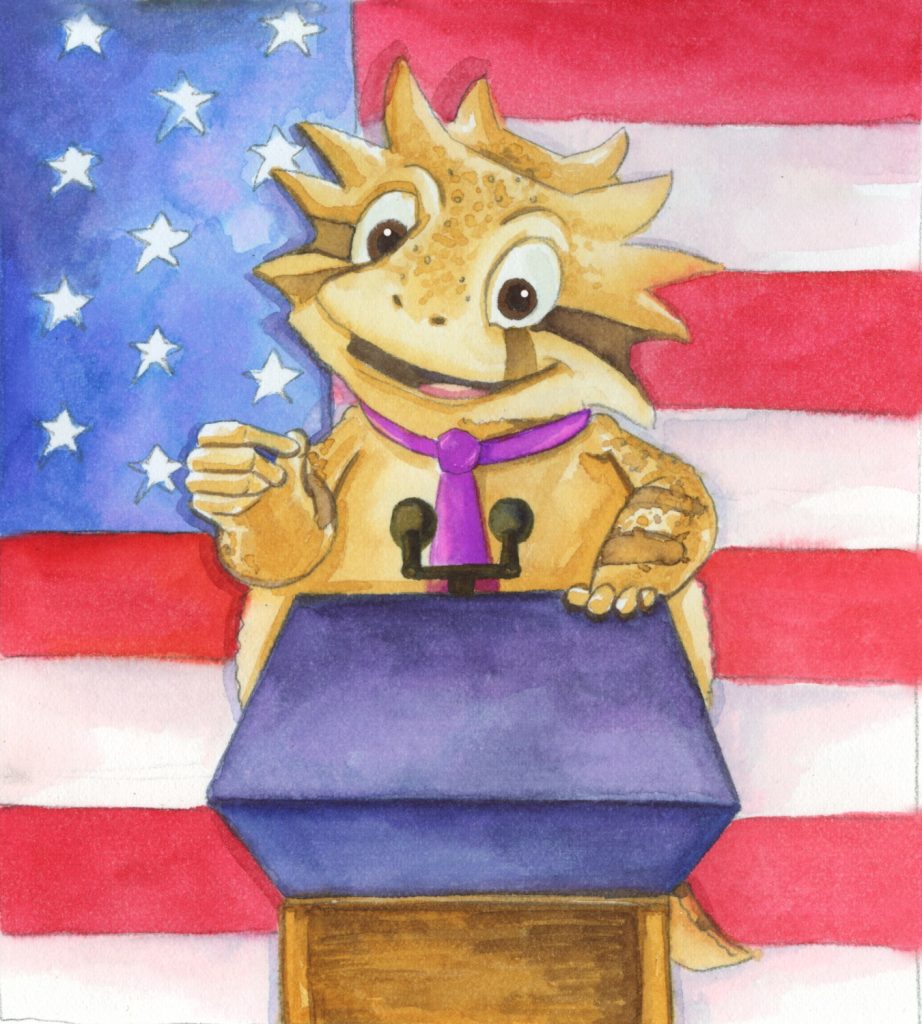
Illustration by Holly Weinstein
Mary Swann Parry ’94
TCU Major: Biology
Book: Sadie McGrady Runs for President (Inkshares, 2016)
Political candidates often promise to bring new ideas to Washington, D.C. Sadie McGrady doesn’t just promise — she delivers. No more veggies. Guinea pig rights. Later bedtimes. Longer recess.
Young Sadie’s success in reaching the Oval Office in the book Sadie McGrady Runs for President mirrors author Mary Swann Parry’s triumph in bringing her empowering work for young girls to press. Publication took perseverance and a novel approach to the process.
Parry’s interest in women’s roles in politics was piqued at an early age. She remembers when, at 9, she learned about the appointment of Supreme Court Justice Sandra Day O’Connor. “I remember being surprised that she was the first woman to be appointed,” Parry said. “It was my first realization that, ‘Hey, this is something we need to work on!’ ”

Mary Swann Parry, inspired by her daughter, wrote Sadie McGrady Runs for President. Courtesy of Mary Swann Parry
Parry began her career in medical research, but after starting a family she changed direction to focus on women’s advocacy for nonprofit organizations in the Chapel Hill, North Carolina, area. For both of Barack Obama’s presidential campaigns, she served as women’s vote director in Orange County, North Carolina. During President Obama’s reelection campaign in 2012, she hatched the idea for Sadie McGrady.
As Parry’s then-10-year-old daughter, Emma, spent time in the election field office with her mom, the girl’s curiosity about and enthusiasm for the work being done around her blossomed. “She was just really … kind of empowered,” Parry said, “inspired by the energy in the office and the opportunity to participate in civic engagement for the first time rather than just hearing about it.
“One day she stopped and asked me, ‘Who can run for president?’ … When I explained it, she got really excited, and I could see her eyes light up with the possibility that she herself could run for office — and in fact president — if she wanted to.”
Eager to fuel Emma’s enthusiasm, Parry searched online for books that could further educate and inspire her daughter about leadership skills and the campaign process. She came up empty. “I could tell that there was something needed,” she said. “There must be a lot of other girls who could be inspired.”
The writing came easily. She knew the story she wanted to tell and had been honing her writing skills as a freelance contributor to Carolina Parent and other publications. Settling on a visual format was trickier. “I wanted it to be as realistic as possible,” she said, “so the reader takes this away as a goal they can apply to their life.”
Photography, rather than illustration, proved to be the right format.
Much like Sadie’s campaign, the photo shoot was a grassroots affair. The models were kids of her friends. The dozen or so volunteers dressed the parts of rival candidates and rally well-wishers, newscasters and campaign staff, and, of course, Sadie herself.
Parry wanted the book to come out before the 2016 election, but she knew the traditional route of landing an agent and publisher would likely take far longer. At an event at a local bookstore, she learned about Inkshares, a crowdfunding publisher. Parry would have to solicit 1,000 preorders. Then Inkshares would edit, design, print and distribute the title. Given Parry’s experience in fundraising and organization, she felt confident she could rally the support she needed to bring Sadie McGrady to life before Election Day.
“[Crowdfunding] might have turned off a lot of people because of the hurdle that it feels like you’re facing,” she said. “But in creating that kind of groundswell of early support, when the book came out, Sadie already had this big crowd of fans cheering for her. That was really exciting.”
The book closes with a thank you to all of Sadie’s supporters and team members and a checklist of how readers can launch their own campaigns for student government and sharpen the skills they’ll need to follow in Sadie’s footsteps. “If leading is something that you’d like to do,” reads the book’s final line, “our next U.S. president just might be you!”
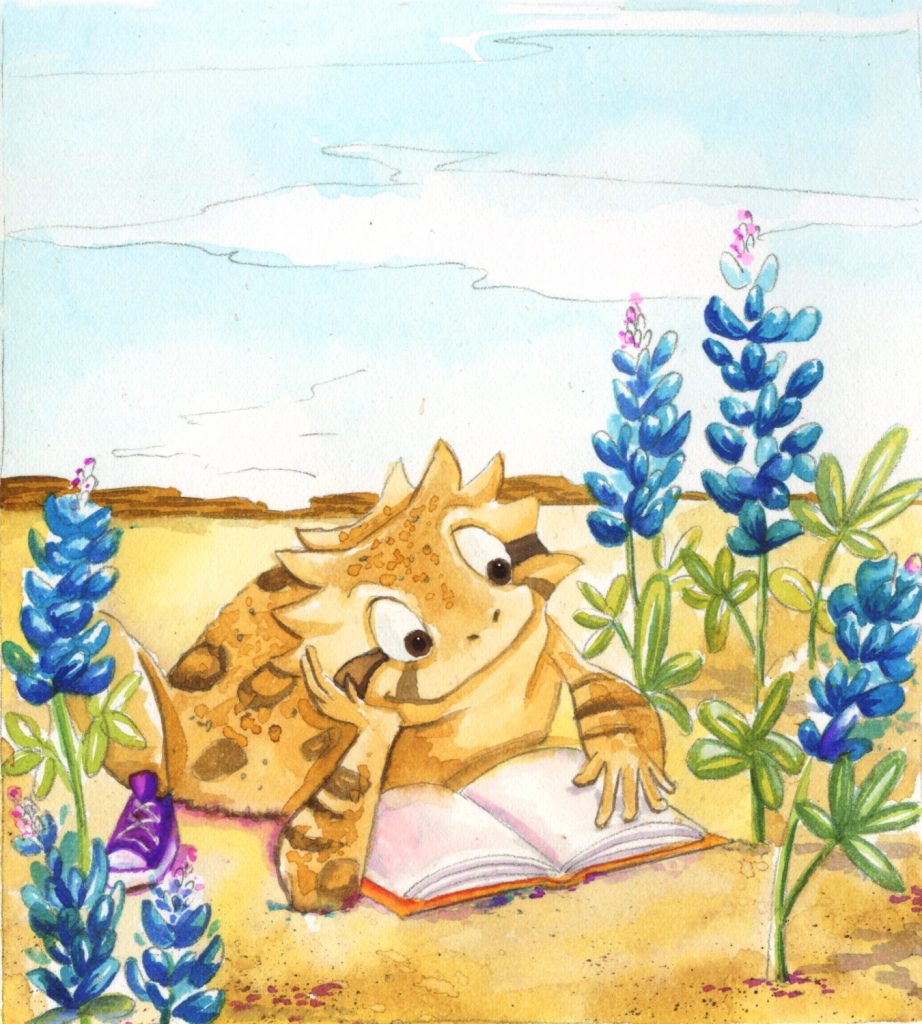
Illustration by Holly Weinstein
Whitney Strauss ’00
TCU Major: Political Science
Books (both from Brown Books): Sweet Child Born in Texas (2017); Sweet Child Born in California (2020)
For some authors, finding the time to write can be a challenge. Pregnancy ensured this was not the case for Whitney Strauss. When the Dallas resident was put on mandatory bed rest in 2010 while pregnant with her second son, she found the opportunity to pursue a passion project that celebrated not only her own children, but all others across the Lone Star State: a picture book titled Sweet Child Born in Texas.
In Strauss’ career in philanthropy, she had worked with several organizations dedicated to educational causes, including the U.S. Department of Education, Greenhill School and the March of Dimes.

Whitney Strauss wrote children’s books that celebrate the qualities that make Texas and California unique. Courtesy of Whitney Strauss
Becoming a mom intensified those interests and sparked the idea of tackling a children’s book. “Reading to my kids the way I was read to as a child,” she said, “really opened my eyes to the different options of books and literature for kids.”
Sweet Child Born in Texas was truly a family affair. The suggestion of making a rhyming picture book came from Strauss’ mom, Kathleen Cooter, a former professor in TCU’s College of Education who served as director of laboratory schools and had earned Texas Teacher of the Year. “She was the one who came up with the idea [of] a poem about being born in Texas so kids could really learn about geography and where they are from and be really proud about [it],” Strauss said. A family friend, Susan Giles, joined the team as a co-author to form a trio they called the Sweet Mamas.
They had no trouble finding enough ideas to fill the book’s 24 pages. “You want to keep more of the traditional [things like] state flower, animal and what the state motto is,” Strauss said, “but then throw in some of the ones that are very unique to Texas, like the state dish and things like that which people might not necessarily know.”
Indeed, the state dish (chili) earned a colorful spread in the book, but other items whose names didn’t rhyme or roll off the tongue as easily didn’t make the cut. (Sorry, Guadalupe bass.) Cooter offered guidance on word choice and content so that the book would align with state reading guidelines.
Writing a book is only part of the process. Getting it published is an entirely different endeavor. Strauss talked to literary agents, joined a national children’s book association, researched publishers and learned as much as she could about the children’s literature market, but still couldn’t find a home for the book. “My mom had experience publishing textbooks,” Strauss said, “but even for her, this journey was very different and challenging.”
As life got busier for all three of them, the trio decided to move the book to the back burner.
As time passed, word of their book spread throughout their extended network of contacts and eventually reached Brown Books Publishing Group, an independent publisher based in Dallas, in 2016. Strauss was invited to Brown Books’ office, where she and the idea were greeted with enthusiasm, Strauss said. “They believed in the project.”
One of the publisher’s first steps was to pair the trio with illustrator Holly Weinstein, who gave the book an anchor character: a charming armadillo who serves as a tour guide. The armadillo smells bluebonnets (the state flower), stirs up chili, visits the Alamo and photobombs the lineup of the three presidents with Texas ties. “My favorite page is the last, because the little armadillo is hugging the longhorn,” Strauss said. “It’s just a sweet page and it’s talking about [how] ‘Friendship’ is the motto in Texas.”
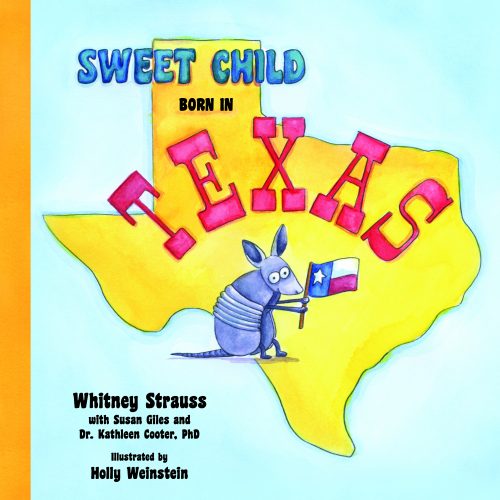
Courtesy of Brown Books
Friends and family were on hand to celebrate with the trio when Sweet Child Born in Texas hit bookstores on March 2, 2017 — Texas Independence Day. Strauss’ sons, now 10 and 15, in particular are big fans. “They think it is the coolest thing,” Strauss said. “Every time we’re in a bookstore, they go and find it.”
The book has since won the June Franklin Naylor Award for the Best Book for Children on Texas History. It also has become a popular baby shower gift. “That has been really special to see — that one of the first books that a baby receives is our book,” Strauss said.
Brown Books has given the trio a green light to expand their Sweet Child series to other states. Sweet Child Born in California was published in February. The Sweet Mamas hope to publish their third book, Sweet Child Born in New York, in 2021.
Of course, Strauss has significantly less writing time now compared to the first go-round. “Being a mom, you don’t always get to choose your [writing] time,” she said. But she keeps paper and a pen with her at all times so that she’s ready when the next sweet inspiration strikes.
Freelance writer Kristin Baird Rattini is the author of three children’s nonfiction books that have been translated into several languages and included in school and library reading lists across the United States.
Editor’s Note: Thanks to Zach Martino ’19 for compiling a list of alumni-authored children’s books. His research led to this feature and other stories about Horned Frogs who write books for kids.
Color Your Own Horned Frog
Love the illustrations in this story? Download a coloring page illustrator Holly Weinstein made just for TCU Magazine.

Your comments are welcome
Comments
Related reading:
Features, Research + Discovery
How to Turn Kids into Readers
Find a genre and format that will get them interested, from graphic novels to audiobooks.
Alumni
A New Christmas Tradition
A boy’s letter to Santa inspired Merideth Tullous’s book.
Alumni, Web Extras
Being Human in Haiti
James English distributed more than 4,000 copies of his myth-busting book to children in the island country.